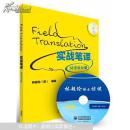
牛津应用语言学丛书:模糊语言
书店库存书籍,无人翻阅
¥ 25 九五品
库存2件
北京海淀
认证卖家担保交易快速发货售后保障
作者查奈尔
出版社上海外语教育出版社
出版时间2000-06
装帧精装
上书时间2024-11-09
- 店主推荐
- 最新上架
商品详情
- 品相描述:九五品
图书标准信息
- 作者 查奈尔
- 出版社 上海外语教育出版社
- 出版时间 2000-06
- ISBN 9787810468565
- 定价 18.00元
- 装帧 精装
- 开本 其他
- 纸张 其他
- 【内容简介】
-
模糊语言 平装 – 2000年6月1日
查奈尔 (编者)
基本信息
出版社: 上海外语教育出版社; 第1版 (2000年6月1日)
丛书名: 牛津应用语言学丛书
平装: 120页
语种: 简体中文
开本: 32
ISBN: 7810468561, 9787810468565
条形码: 9787810468565
商品尺寸: 20.8 x 13.8 x 1.2 cm
商品重量: 240 g
品牌: 上海外语教育出版社
媒体推荐
书中着重处理的模糊现象有三类:第一类是模糊附加词;第二类是模糊词语;第三类是模糊蕴含。
《模糊语言》是一部从英语教学的角度分析、研究英语中有模糊意义的单词、短语和表达法的学术著作。作者以语言使用为基础,结合英语教学,着重对模糊语言进行分类分析。《模糊语言》的九个章节可以归纳为三个部分。第一部分主要介绍什么是模糊语言,在书中作者用什么方法研究模糊语言,指出语言研究应该采用真实的语料,而不是杜撰的、脱离语境的句子;第二部分用相当大的篇幅,列举了语言运用中的大量实例,内容涉及数词和约数词、约整数词、模糊量词、类型标记符以及占位符等方面,分析其模糊性的根源和实质,并指出对英语教学的启示;第三部分指出,模糊语言使用的背后有许多动机,有时讲话者想提供更精确的信息,有时是为了保密,有时则是迫不得已,因为语言中可能没有现成的表达形式。
作者简介
编者:(英国)查奈尔
目录
acknowledgements.
the author and series editors
foreword
text data, its sources, and presentation
chapter 1 what is vague language?
1.1 introduction
1.2 defining vague language
1.3 vagueness and communication
1.4 the treatment of vague language in this book
1.5 a working definition of vague language
1.6 the place of vagueness in the study of language
1.7 organization of the book
chapter 2 theory and methodology of the study of vague language
2.1 idealization
2.2 meaning and what it means to study meaning
2.3 levels of analysis of language
2.4 making judgements about language
2.5 distinguishing between semantics and pragmatics
2.6 semantics
2.7 representations of meaning
.2.8 pragmatics
2.9 'context' and 'pragmatics'
2.10 vagueness versus ambiguity
2.11 methodology
2.12 examples and other data
2.13 transcription of recorded data
chapter 3 approximating quantities with numbers and approximators
3.1 introduction
3.2 the general meaning of approximator + n structures
3.3 about, around, and round
distribution and structure
meaning
3.4 approximately
distribution
meaning
3.5 norm
intonation
distribution
meaning
3.6 n or so
distribution
meaning
3.7 partial specifiers
3.8 combinations of approximators
3.9 numbers in approximations
approximators with and without round numbers
3.10 implicatures and entailments of approximator + n structures
3.11 cross-linguistic comparison
3.12 summary
chapter 4 approximating quantities with round numbers
4.1 using a precise number with a vague meaning
4.2 'round' numbers = reference point numbers
4.3 'faded' numbers as approximations
4.4 how do we know when an apparently exact
number is an approximation?
4.5 exaggeration
4.6 using a plural number name to approximate a quantity
meaning
4.7 cross-linguistic comparison
4.8 summary
chapter 5 approximating quantities with non-numerical
vague quantifiers
5.1 introduction
5.2 approach
5.3 plural quantifier + of + noun
bags (o19
loads (o19
lots (o19
masses (o19
oodles (o19
5.4 a + singular quantifier (+ of + noun)
a bit of
a load of
a lot (o19
a mass of
a scrap (o19
a toucb of
5.5 other uses of pseudopartitives..
5.6 vague quantifier + countable noun
(a) few
some
several
many
umpteen
5.7 adverbs of frequency
5.8 summary
chapter 6 referring vaguely to categories
6.1 introduction
6.2 an outline analysis
6.3 testing for the meaning of vague category
identifiers
method
results and discussion
responses to items in rosch's categories
responses to real examples
general conclusions from the results
6.4 the structure of the tags
6.5 structure of exemplar + tag
noun phrase + tag
verb phrase + tag
embedded sentence + tag
prepositional phrase + tag
adjectives, adverbs + tags
intonation and vague tagging
6.6 co-occurrence restrictions
6.7 summary
chapter 7 tbingy and wbatsisname: placeholder words
7.1 introduction
7.2 examples
tbingy
tbingummy, thingummyjig, thingummabob
whatsisname
whatnot
whosit
whatsit
7.3 semantics and pragmatics
7.4 summary
chapter 8 the uses of vague language
8.1 introduction
8.2 analytical approach
8.3 three scenarios showing vagueness
eighty or so pence
elaborated code and things like that
humorous effects
8.4 giving the right amount of information
8.5 deliberately withholding information
8.6 using language persuasively
8.7 lexical gaps
8.8 lacking specific information
8.9 displacement
8.10 self-protection
8.11 power and politeness
8.12 informality and atmosphere
8.13 women's language
8.14 summary
chapter 9 going beyond the information given
9.1 summary
9.2 implications for language understanding
vagueness and categorization
9.3 language and the world
9.4 consequences for linguistics
9.5 applications of the study of vague language in english
english language teaching
communication skills teaching
vagueness and politeness
lexicography
9.6 an exercise on the analysis of vague language
9.7 looking forward
bibliography
glossary
index
点击展开
点击收起
相关推荐
— 没有更多了 —










![绿竹神气:中国100首咏竹古诗词精选(英文版) [The Charm of Bamboo:100 Selected Ancient Chinese Poems on Bamboo]](https://www0.kfzimg.com/G03/M01/D6/8A/pYYBAFTS1lqAJ0vJAADGCWTwJRs776_s.jpg)











![对比语言学:[英文版]](https://www0.kfzimg.com/sw/kfz-cos/kfzimg/ccaebdec/c5382e9de2f4cfc5_s.jpg)












以下为对购买帮助不大的评价